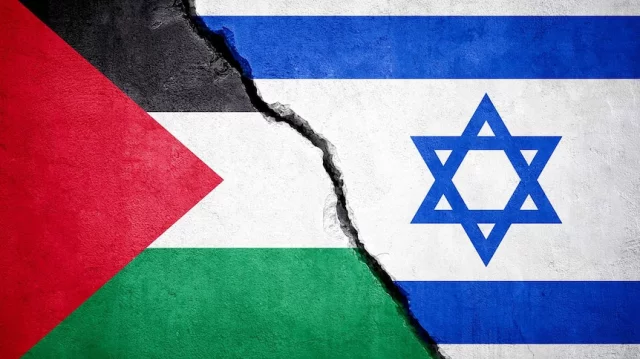The Middle East remains embroiled in conflict, with the recent UN resolution condemning Israel’s actions, escalating tensions in Lebanon, and the deepening crisis in Gaza and the West Bank painting a troubling picture. This volatile landscape reveals a complex and terrifying pattern, hinting at the emergence of a terrorist state amidst regional chaos. Immediate prospects for peace seem bleak due to Israel’s current government’s unresponsiveness and apparent willingness to escalate conflict to maintain power. However, there is a pressing need for sustained international efforts, precise focus on a two-state solution within a 12-month timeline, and an imminent short-term solution to halt Israel’s war elevation. Humanitarian support, particularly in Gaza, and a global commitment to justice and human rights are crucial to fostering long-term stability. The coming period will be critical in shaping the region’s future, and the international community must act decisively to mitigate further escalation and support the path to peace.
On September 18, 2024, the UN General Assembly adopted a historic resolution demanding that Israel end its unlawful presence in the Occupied Palestinian Territory within 12 months. The resolution, passed by a two-thirds majority with 124 votes in favor, 14 against, and 43 abstentions, marks a significant moment in international diplomacy. Matthew Miller, State Department spokesperson, emphasized the importance of adhering to international law and protecting human rights in a recent briefing. However, Israel’s response has been dismissive, with its government viewing such resolutions as biased and one-sided.
The humanitarian situation in Gaza is dire. According to recent reports, over 41,000 Palestinians have been killed, and over 100,000 injured since October 7, 2023, with Israeli raids intensifying with civilian casualties of women and children escalating. The blockade and continuous military actions have crippled Gaza’s infrastructure, leaving millions without access to basic necessities. Humanitarian aid must be prioritized to alleviate the suffering and prevent a complete collapse of the region.
Lebanon, already grappling with a severe economic crisis, has seen escalating tensions spilling over from the Israeli-Palestinian conflict. Hezbollah’s involvement has further complicated the situation, raising fears of a broader regional conflict. Recent statements from Iran, a key supporter of Hezbollah, indicate that Tehran does not desire a war with Israel. Iran’s Foreign Minister Hossein Amir-Abdollahian stated, “We do not want war in the region, and we will act in a way to avoid it.” This underscores the delicate balance that must be maintained to prevent a wider conflict.
In addition to ongoing operations in Gaza, Israel has ramped up actions in the West Bank. Recent reports indicate an increase in military raids and settler violence against Palestinians. These actions have led to a significant rise in casualties, further exacerbating the humanitarian crisis. The continued provocation can further fuel tensions and undermine prospects for peace.
Ultimately A two-state solution remains the most viable path to lasting peace. This approach envisions Israel and Palestine coexisting as two sovereign states, with clear and agreed-upon borders. However, achieving this within the suggested 12-month period requires unprecedented international cooperation and pressure.
The United Nations, along with key global players, must lead efforts to bring both parties to the negotiating table. This includes addressing core issues such as borders, the status of Jerusalem, and other core issues of concern. The European Union’s foreign policy towards the Palestinian territories, as documented by Al-Fattal, provides a framework for such negotiations, emphasizing the need for a balanced approach that respects both parties’ rights.
The international community’s role is crucial in this complex scenario. The United Nations must enforce resolutions and ensure compliance through mechanisms that hold violators accountable. Additionally, global transparency and a steadfast commitment to justice and human rights are essential. This involves not only addressing the immediate humanitarian needs but also ensuring that long-term solutions are grounded in fairness and equity.
The future of the Middle East hangs in the balance. The international community’s actions in the coming months will be critical in shaping the region’s trajectory. Immediate and decisive action is required to halt the escalation of conflict, provide humanitarian aid, and facilitate a two-state solution.
The international community must exert more pressure on Israel to engage in meaningful negotiations. This involves not only diplomatic efforts but also economic and political measures that can incentivize a shift in policy. The current Israeli government, led by Prime Minister Benjamin Netanyahu, appears more focused on maintaining power through hardline stances rather than seeking a peaceful resolution.
The urgency of adopting a fair and lasting resolution cannot be overstated. By committing to justice and human rights, the global community can foster a more stable and peaceful future for the region. By aligning efforts and focusing on long-term solutions, the international community can turn this critical juncture into a turning point for peace and stability in the Middle East.
